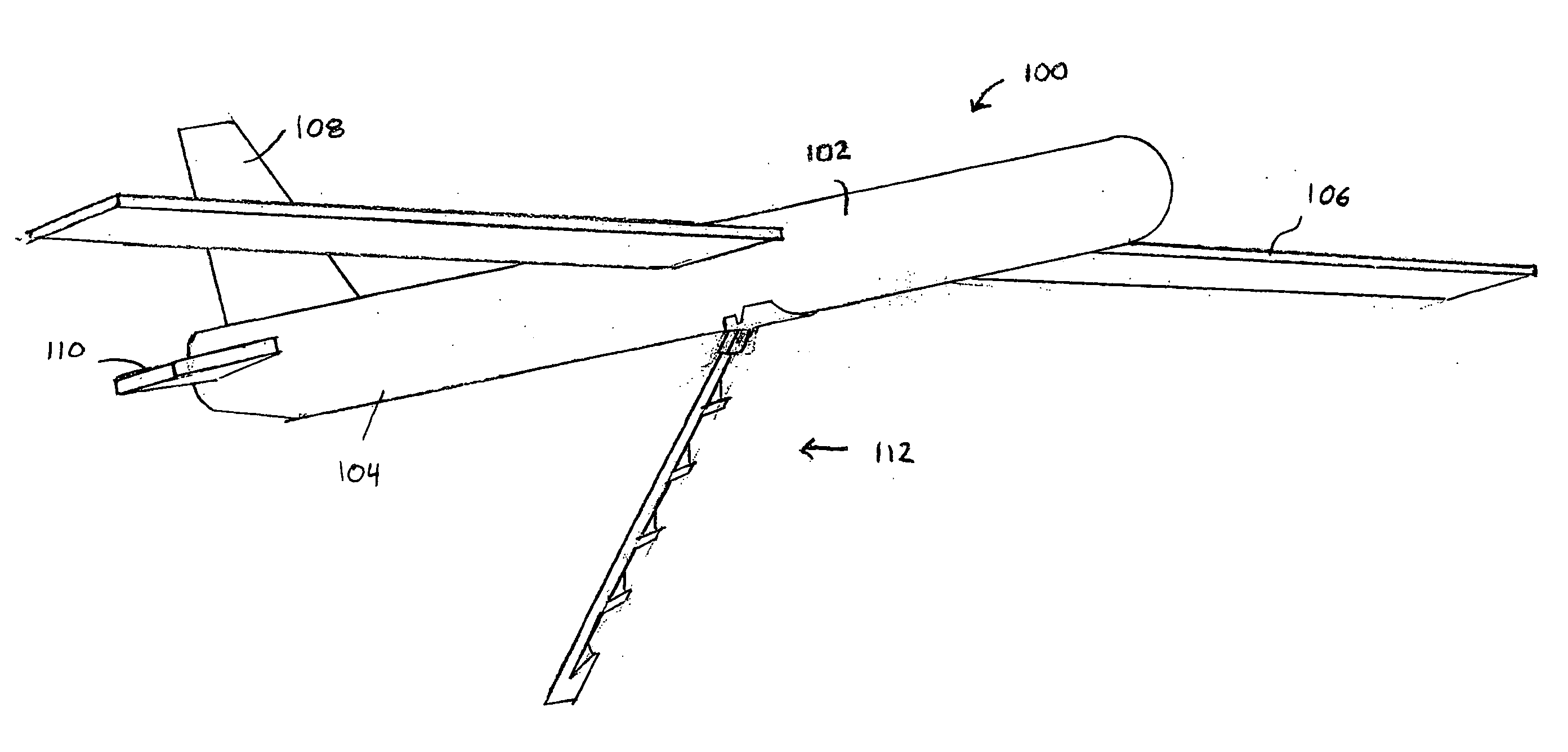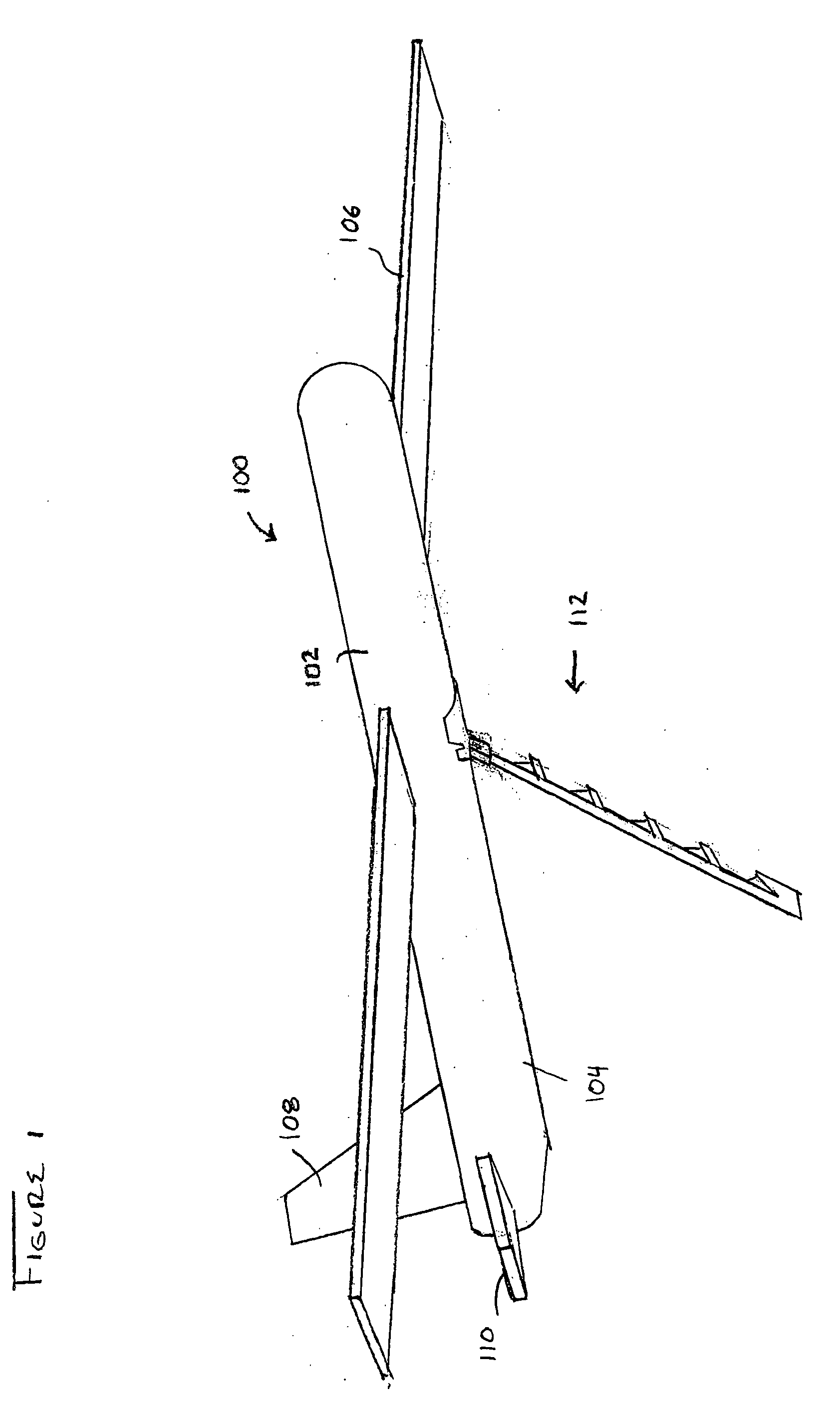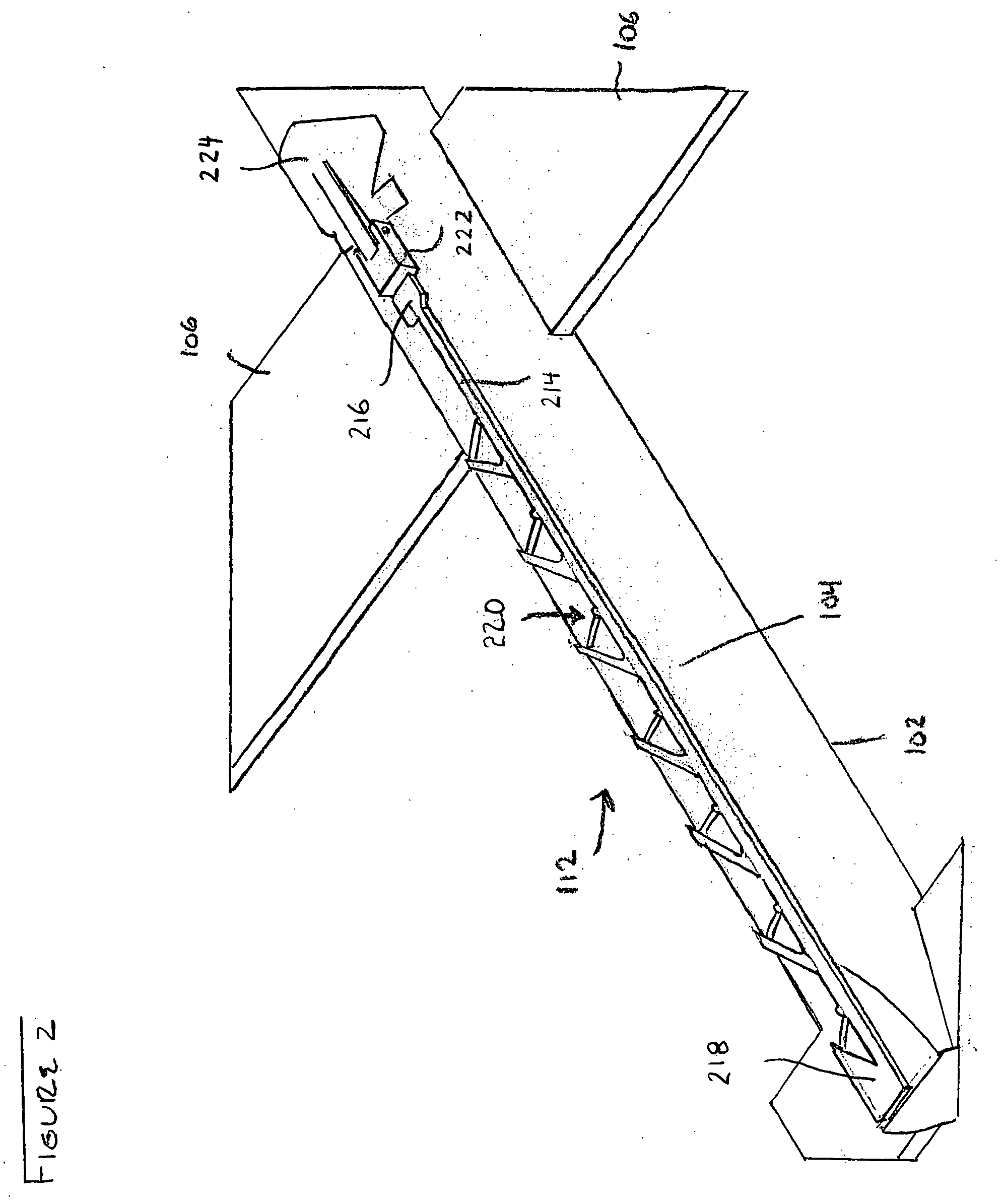UAV arresting hook for use with UAV recovery system
a technology for uav recovery and hooks, which is applied in the direction of arrest hooks, micro-sized aircraft, transportation and packaging, etc., can solve the problems of difficult to safely land a uav on the deck of a ship, the difficulty of recovering a uav, and the difficulty of regaining a uav on the ship deck
- Summary
- Abstract
- Description
- Claims
- Application Information
AI Technical Summary
Benefits of technology
Problems solved by technology
Method used
Image
Examples
Embodiment Construction
[0025]FIG. 1 depicts UAV 100 with arresting hook 112 in accordance with the illustrative embodiment of the present invention. In FIG. 1, arresting hook 112 is in a deployed position in preparation for snagging the arresting line (not depicted) of a UAV recovery system.
[0026] UAV 100 includes fuselage 102, wings 106, vertical stabilizer 108, horizontal stabilizers 110, and arresting hook 112. The arresting hook is coupled to underside 104 of fuselage 102.
[0027]FIG. 2 depicts the underside of UAV 100 and shows further detail of arresting hook 112. In FIG. 2, arresting hook 112 is in a stowed position. Arresting hook 112 is coupled to underside 104 of fuselage 102 via mounting bracket 224.
[0028] Arresting hook 112 comprises arm 214, a plurality of latches 220, and rotation block 222, structurally interrelated as shown. In the illustrative embodiment, arresting hook 112 is coupled to fuselage 102 at about the midpoint between the nose and tail of UAV 100.
[0029] Front end 216 of arm ...
PUM
 Login to View More
Login to View More Abstract
Description
Claims
Application Information
 Login to View More
Login to View More - R&D
- Intellectual Property
- Life Sciences
- Materials
- Tech Scout
- Unparalleled Data Quality
- Higher Quality Content
- 60% Fewer Hallucinations
Browse by: Latest US Patents, China's latest patents, Technical Efficacy Thesaurus, Application Domain, Technology Topic, Popular Technical Reports.
© 2025 PatSnap. All rights reserved.Legal|Privacy policy|Modern Slavery Act Transparency Statement|Sitemap|About US| Contact US: help@patsnap.com



